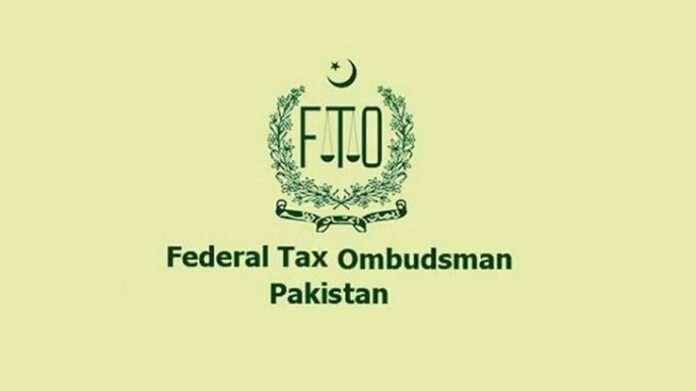Somewhere on a dusty highway in Khyber Pakhtunkhwa, a police constable waves down a gleaming Toyota Fielder with a suspiciously foreign chassis number, not to mention the car’s non-existence in Toyota Indus’ fleet of Pakistani vehicles. Upon inspection, it becomes apparent that the car may well be smuggled or, in other words, Non-Customs Paid (NCP).
What does the constable do? Within minutes, the vehicle is confiscated and impounded by the police. The owner is later fined or convicted, and a receipt is issued by the provincial Excise Department. Much later, depending on how the case was handled, either the police or the provincial excise department decides the fate of the car, and the story ends there.
Any car that comes into Pakistan is liable to pay customs duty. And under the Customs Act, 1969, any vehicle that enters the country without payment of those duties falls squarely under the jurisdiction of the Customs Department. Section 168 empowers Customs to seize such vehicles, Section 170(2) mandates that any agency that detains a suspected smuggled vehicle must immediately hand it over to Customs, and Section 185-B makes it clear that only a Special Judge of Customs has jurisdiction to try such offences.
So does this mean that the good police constable mentioned earlier is subverting the legal process for some personal gain? The simple answer is, no, and here lies the problem. Under the Khyber Pakhtunkhwa Road Checking, Seizure and Disposal of Motor Vehicles Rules, 2015 and the Balochistan Road Checking, Seizure and Disposal of Motor Vehicles Rules, 2025, provincial police and excise departments have been given overlapping powers to stop, seize, and even dispose of vehicles suspected of being NCP. In practice, this means that the provincial authorities are exercising powers that, constitutionally and legally, belong to the federal Customs Department.
A recent ruling by the Federal Tax Ombudsman (FTO) has unearthed this far-reaching problem after a complaint from the Directorate General of Intelligence & Investigation-Customs (I&I) was lodged. The FTO upon noticing found that provincial police and excise departments in Khyber Pakhtunkhwa and Balochistan have been independently seizing, prosecuting, and disposing of smuggled vehicles, an action that violates both federal law and the Constitution.
According to the FTO’s findings, provincial laws since at least a decade ago, gives provincial authorities overlapping powers to check, seize, and even auction NCP vehicles. The ruling describes these laws as “inconsistent with the federal Customs Act, 1969” and says they have “caused loss of federal revenue and undermined anti-smuggling enforcement”.
In such a scenario, the aforementioned good police officer may not be as good as we suggested, because once the dust clears the police department can choose the manner in which they want to dispose the vehicle, thereby giving it their own department or auctioning it off under favourable conditions.
To make matters worse, police has found another workaround. According to the FTO ruling, some courts in Punjab have been granting superdari(temporary custody) of NCP vehicles under Section 550 of the Criminal Procedure Code, allowing such vehicles to be retained or disposed of through provincial mechanisms instead of being handed over to Customs.
All these practice, as the Federal Tax Ombudsman (FTO) observed, has caused substantial revenue loss to the federal exchequer by depriving it of the duties and taxes owed on these vehicles.
Why the problem exists?
At the operational level, there is no unified or real-time reporting mechanism for impounded NCP vehicles between provincial departments and the Federal Board of Revenue (FBR) or Customs. Vehicles seized under provincial laws often vanish into administrative limbo some re-registered under provincial excise authorities, others auctioned off locally, and many simply disappear from official records.
The FTO’s ruling describes this as a systemic breakdown of federal control over the anti-smuggling regime. Customs’ enforcement structure, already thinly spread across porous borders, is being undermined by provincial authorities acting beyond their constitutional remit. The report notes that the Customs Act, 1969 is a federal statute falling under the Federal Legislative List, Part I (Item 43: Imports and Exports across Customs Frontiers), giving Parliament and federal institutions exclusive jurisdiction over customs matters.
However, by creating provincial rules that allow local authorities to seize, prosecute, and even dispose of imported vehicles, the provinces have, perhaps inadvertently, stepped into an area reserved exclusively for the federation. This, the FTO notes, is in violation of Article 143 of the Constitution, which holds that in the event of inconsistency between a provincial law and a federal law, the latter shall prevail.
The FTO further observed that such rules “have created legal, financial, and operational handicaps and distortions, leading to loss of federal revenue and undermining anti-smuggling enforcement.” Provincial rules effectively create a parallel legal structure for dealing with smuggled vehicles, one that lacks transparency, uniformity, and federal oversight.
At the heart of the problem is the concept of jurisdictional overreach — provincial authorities using road-checking and excise powers to tackle what is, in legal terms, a federal fiscal offence.
This not only creates legal confusion but also undermines deterrence: offenders can exploit procedural inconsistencies to retain or regularise smuggled vehicles through provincial channels. According to the order, whenever a provincial authority such as the police or excise department intercepts or detains a suspected Non-Custom Paid (NCP) vehicle, it must immediately report and hand over the vehicle to the nearest Customs House or Customs Collectorate.
This ensures that the vehicle enters the formal adjudication process prescribed by customs law, where the owner or possessor is given a legal opportunity to pay the due customs duty and taxes if eligible. The FTO made it clear that provincial authorities are not empowered to dispose of or auction such vehicles on their own, as this violates federal jurisdiction. Their role is limited to detection, reporting, and safe custody until transfer to Customs, after which all further proceedings must be handled exclusively by federal customs officers.
The loophole of superdari under the CrPC compounds this dysfunction. Once a lower court orders a vehicle to be released on superdari to the police or a private individual, Customs’ jurisdiction is effectively neutralised. Vehicles under criminal trial for smuggling are thus released without the payment of duties, defeating the very purpose of the Customs Act. The FTO ruling explicitly highlighted this abuse, noting that despite repeated communications from Customs Collectorates, provincial compliance has remained “poor.”
The absence of inter-agency coordination also has operational consequences. Customs maintains national intelligence and enforcement systems designed to track smuggled goods and vehicles through its WeBOC (Web-Based One Customs) system and anti-smuggling operations wing. But once a provincial department seizes a vehicle independently, that information never reaches the federal database. This creates blind spots in the national anti-smuggling grid and prevents Customs from pursuing high-value networks that profit from importing and circulating NCP vehicles.
The result is a fragmented enforcement landscape, where parallel authorities operate under separate laws, creating space for manipulation and corruption. Provincial excise departments earn impoundment or disposal fees, the police exercise discretionary seizure powers, and the federal exchequer loses millions in unpaid duties while smuggling networks continue to exploit porous borders and weak inter-agency controls.
But simply pointing out one or two misseized vehicles isn’t enough. The terrain of the problem is both legal and geographical, especially in Khyber Pakhtunkhwa (KP), where rugged mountain passes, border with Afghanistan and tribal district geography make enforcement particularly difficult.
To make matters worse, NCP vehicles were allowed to operate in Malakand Division and the former Federally Administered Tribal Areas (FATA) because these regions were granted special tax exemptions under Article 247 of the Constitution and the PATA Regulations.
These areas were considered “non-settled” regions, falling outside the full jurisdiction of Pakistan’s federal taxation and customs regime. To maintain local goodwill and political stability in a historically volatile border zone, successive governments informally tolerated the inflow of duty-unpaid vehicles from Afghanistan and other border crossings, treating them as a local privilege rather than a customs violation.
Even after the merger of FATA with Khyber Pakhtunkhwa through the 25th Constitutional Amendment in 2018, enforcement has remained inconsistent. Many residents continue to use NCP vehicles because they were acquired decades ago and because regularisation schemes have repeatedly been postponed or politicised.
The KP Excise & Taxation Department has itself compiled data on over 110,000 non-custom paid (NCP) vehicles, and media reports claim that this falls short by more than 100%.
The scale of the problem matters. Some reports estimate that there are as much as 450,000 NCP vehicles in Pakistan, while official provincial registries account for only about 128,000.
Taken in context of Pakistan’s current auto industry, these numbers suggest that beyond individual seizures, a systemic bypass of customs duties and regulatory oversight is underway, one that distorts the domestic auto industry (which pays full duties), and drains federal resources.
The FTO’s proposed solutions:
In light of this, the FTO offers a clear set of recommendations:
-
Direct the federal Revenue Division to instruct the Member Customs (Operations) at FBR to issue “D.C.” letters to sensitise the federal Secretary Law and all provincial Secretaries, IGPs and Excise/Taxation DGs to annul or amend conflicting provincial rules (such as the KP Road Checking, Seizure and Disposal of Motor Vehicles Rules, 2015 and the Balochistan equivalent of 2025) that are repugnant to the Customs Act, 1969.
-
Require provincial authorities to coordinate with the Chief Collector of Customs (Enforcement) Islamabad to surrender all detained/seized NCP vehicles or those with tampered or cut & weld chassis to customs under Section 170 of the Customs Act, 1969.
-
Amend Section 170(2) of the Customs Act to explicitly include “officer of provincial Excise Department or of any other Department under the provincial government” after “police officer” — thereby formalising the hand-off process.
-
Set a compliance deadline of 90 days and invoke Article 184(3) of the Constitution for Supreme Court guidance if necessary.
These recommendations are necessary, however, it is clear that they focus heavily on legal harmonisation and hand-over mechanics, but less on real-time intelligence sharing, reporting infrastructure, and inter-agency capacity building especially in provinces like KP where NCP vehicle numbers are massive.
The FTO itself notes that no effective mechanism currently exists for real-time reporting of impounded NCP vehicles and that provincial compliance “remains poor.”, yet it assumes enforcement can improve once duplication is removed. How? We cannot say.




